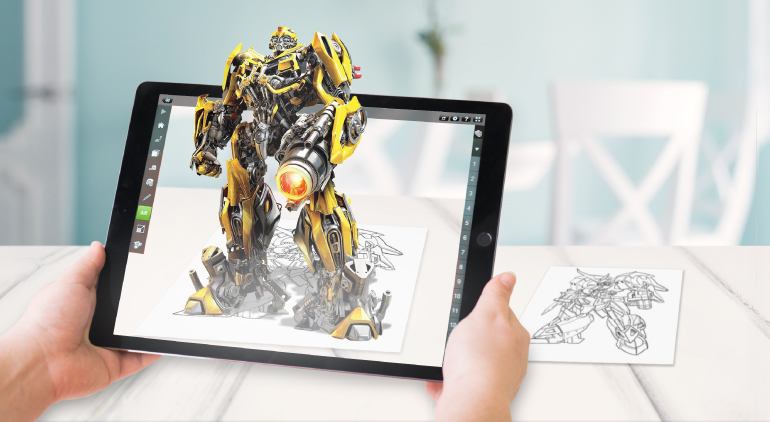Augmented Reality for Education - The Future of Education Industry

Generation Alpha has taken over and the old education system that included practical learning through engaging videos, is extinct! With Generation Alpha depending entirely on gadgets and gizmos, books will become too space consuming, both mentally and physically. The basic method of teaching this generation will be through videos but it certainly will not be enough.
When Generation Alpha emerges as the new leader of the society in future, computer technology like Augmented Reality (AR), Mixed Reality (MR) and Virtual Reality (VR) will be involved in all types of industries from entertainment to education.
The entertainment industry has already experimented with this technology and experienced captivating results. The education industry, on the other hand, is slowly incorporating this technology well.
However, children forming Generation Alpha are already in the process of learning and going to school. If their technology in the future is going to be altering, then their education needs to be altered as well. Hence, it is vital to accept and act upon the fact that AR and the future of education are co-dependent.
The Upcoming Generation and Their Tech Needs
Now, it is not difficult to picture young boys and girls glued to their phones for the better part of the day, because we are present in a world wherein, this behaviour is a norm.
However, imagining AR incorporated into the larger majority of mobile applications and is used on a regular basis is a little harder. This is because AR technology has the ability to subtly merge into reality and still remain just as captivating as the immersive simulation that VR provides.
In fact, we have used AR technology in our daily lives without even knowing through popular games like Pokemon GO and Real Strike or entertaining platforms that use filters like Snapchat and Instagram!
Understanding how much we are surrounded by AR technology puts things into a clearer perspective. Generation Alpha and all the generations that will follow will be dependent on AR technology on a daily basis.
Hence, AR for education is not only an obvious stepping stone, but a necessary one. Without educational AR applications like Quiver that can make a book come to life with a smartphone, our next generations will not be captivated by simply listening to lectures and reading textbooks.
Similarly, without applying AR technology for education first, the future generations will have a tough time getting acquainted and comfortable with this new technology. Hence, AR and the future of education are intertwined in a symbiotic relation.
Augmented Reality for Education: How AR Can Help

Augmented reality for education has innumerable advantages for students of all disciplines. The interactive experience that one gets from applications like Quiver, shows how promising this technology is.
Applications like Quiver allow us to envision the other ways in which AR can be used for education, by simply pointing a smartphone towards a book and capturing a 3D picture.
Learning through gamification can also be conducted by teachers through AR. This way, students will be able to physically learn new skills and will also simultaneously understand how to cooperatively collaborate with their peers.
Learning skills through gamification does not only yield better results but also increases motivation and curiosity in students!
Incorporating AR can enhance the quality of learning and efficiency, contributing to the future of augmented reality in education, and all this can happen without educational institutes having to spend extra money. In fact, AR technology in education is very cost-efficient. Since students are equipped with smartphones from a young age, that is all the technology needed to employ AR in classes.
Benefits of Augmented Reality in Higher Education
How AR can help in education, in general, has been discussed in length above. However, more specifically, AR can help enhance STEM and VR for higher education.
Students pursuing any of the four disciplines can benefit largely from this technology, as it allows them to understand complicated concepts in an easy and comprehensible manner. AR allows complicated concepts to existing in this reality which in turn, makes concepts interactable for students!
Engineering students, with the use of AR glasses, can design prototypes through AR technology. The AR glasses enable them to access any videos that help with assembling or audio instructions.
The AR glasses also give these engineering students an idea as to how their prototype will interact in real space and time.
Medical students have their fair share of advantages of using AR in their field as well. The Augmedics’ ARGUS System is a guided AR technology in education that assists healthcare workers to prepare for surgeries and transforming complex, invasive, and dangerous operations like spinal surgeries, safer and non-invasive. This type of AR system can also help train medical students and learn how to conduct surgeries.
future of augmented reality in education are in our hands. It is up to us and how fast we can accept the gains of AR for higher education that this technology can transform the education system for the better. Regardless of whether the older generations can accept it or not, the newer generation is ready for the upcoming digital age!




